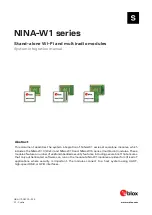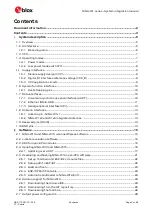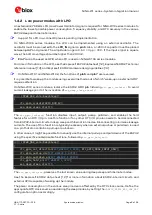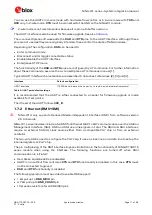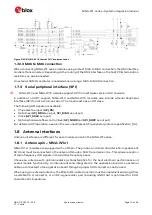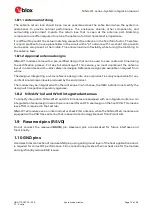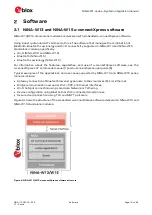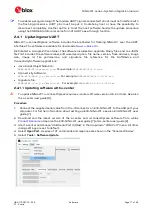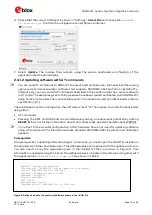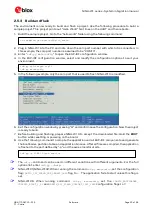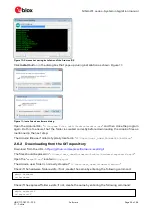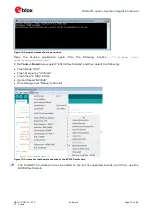
NINA-W1 series - System integration manual
UBX-17005730 - R15
System description
Page 12 of 54
C1 - Public
1.7.2.1
RMII Startup precautions
The
RMII_CLK
input (GPIO27) is multiplexed with the ESP boot pin. Therefore, to ensure that the boot
mode is not entered inadvertently, the
RMII_CLK
(GPIO27) must be held high during boot for at least
1.5 ms.
When using u-connectXpress, the
RMII_CLK
pin is monitored during boot. The u-connectXpress
software checks the availability of the clock signal 1.2 s after boot. You must make sure to that the
RMII_CLK
signal is available at that time to enable the RMII interface. The clock signal can be enabled
beforehand, but only if the requirement to avoid entering the ESP boot mode is not interfered with.
On EVK-NINA-W1, these startup precautions are implemented using two buffers and a RC delay
circuit that override the RMII clock from the PHY. This delays the clock so that it starts a short time
(50 ms) after the module boot.
Figure 4: EVK-NINA-W1 RMII clock delay circuit
1.7.2.2
MAC to PHY connection
When connecting NINA-W1 series modules to an external PHY circuit, both the RMII and SMI
interfaces must be connected. The default PHY address (0x1) must be configured on the PHY side.
Follow the recommendations of your chosen PHY chip supplier for implementation details.
An example of a PHY implementation is shown in Figure 5. PHY KSZ8081 is recommended and is used
on the EVK-NINA-W1.

